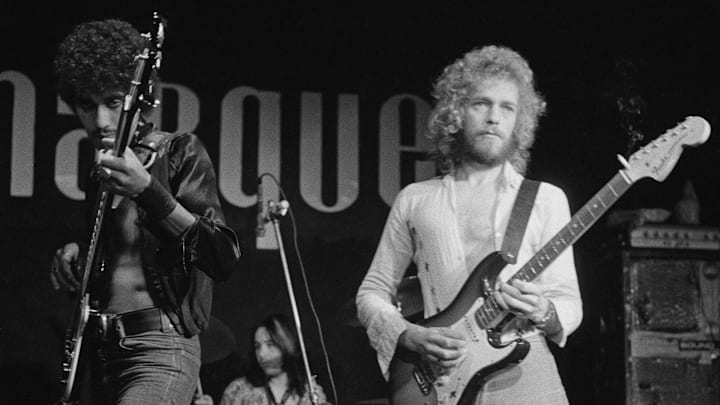VOCALS – THREE VOICES TO RAISE THE ROOF
ROB HALFORD (Judas Priest) – “VICTIM OF CHANGES”
“Victim of Changes” opened Judas Priest’s second album, Sad Wings of Destiny. Rob Halford’s effortless high tenor begins the song without great fanfare. Halford’s voice was always capable, in his younger days, of remaining pure while still providing the power necessary for metal vocals. About three minutes in, he hits his first falsetto mini-shriek, but it still seems like standard first-rate hard rock singing.
Then, after the guitar solo, the song downshifts into a mystical, romantic, slow pace and Halford’s voices drops in tone and timbre, before revving back up into high gear for the big finish. He provides several different screams in the final minute, whether he’s singing lyrics or simply providing a guttural counterpoint to the guitar. And he ends on a run of “nos,” with the final one being as operatic as metal had ever been by 1976.
Halford had one of the most flexible voices in rock & roll, and in this one track, he announced that metal vocals – and by extension – metal music could go a lot farther than it ever had before.
HALEY REINHART (Scott Bradlee’s Post Modern Jukebox) – “SEVEN NATION ARMY”
Bradlee’s band employs any singer he feels can fit his neo-big band versions of modern pop songs. Some of the best, little-known singers working today have taken the mic for him and reinvented some rock classics. Haley Reinhart, a veteran of American Idol, has been one of his more prodigious vocalists. She may be better known for her slinky, sleepily romantic version of Radiohead’s “Creep,” but I think the White Stripes’ cover shows off her voice to even greater effect.
Reinhart can play it sweet or can play it rough, and the real artistry comes when she is doing both simultaneously. She begins “Seven Nation Army” as a nursery rhyme but before long she blasts out “Leave it alone” like any great blues singer would do. The song shows off the range she has, especially when it comes to tone. In Bradlee’s grand scheme, vocalists provide just one more instrument, and when Reinhart is on the mic, you hear a virtuoso in action.
JANIS JOPLIN – “PIECE OF MY HEART”
Ok, maybe there’s a better vocal in rock history, but in less than 30 seconds of “Piece of My Heart,” Janis Joplin makes her case quite plain. She has undeniable power. She can transition seamlessly into the softer, gentler passages. And she is always interesting. Her tone, her phrasing – they are unique. They aren’t pretty, but they are beautiful. They define rock singing.
Erma Franklin recorded a fine original a year before Joplin, and this is another case of a white musician benefitting from race. But unlike Irma Thomas’s “Time is on My Side,” which has an arguably superior vocal to Mick Jagger’s more well-known Stones’ version, Joplin simply sings the song better. The difference becomes clear in the pre-chorus, where Joplin’s clarity and power are unmatched. No one could sing “Come on, come on…” with the fervor of Janis.
This concludes today’s countdown. There are hundreds, perhaps thousands, of other virtuoso performances you can choose from for your own personal list, but I think these are pretty good representatives of what rock and roll artists can achieve.
